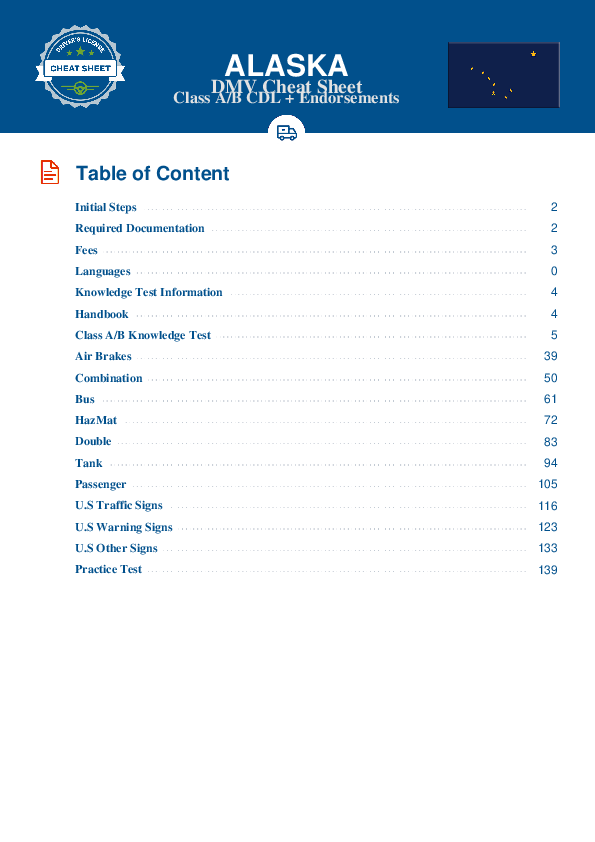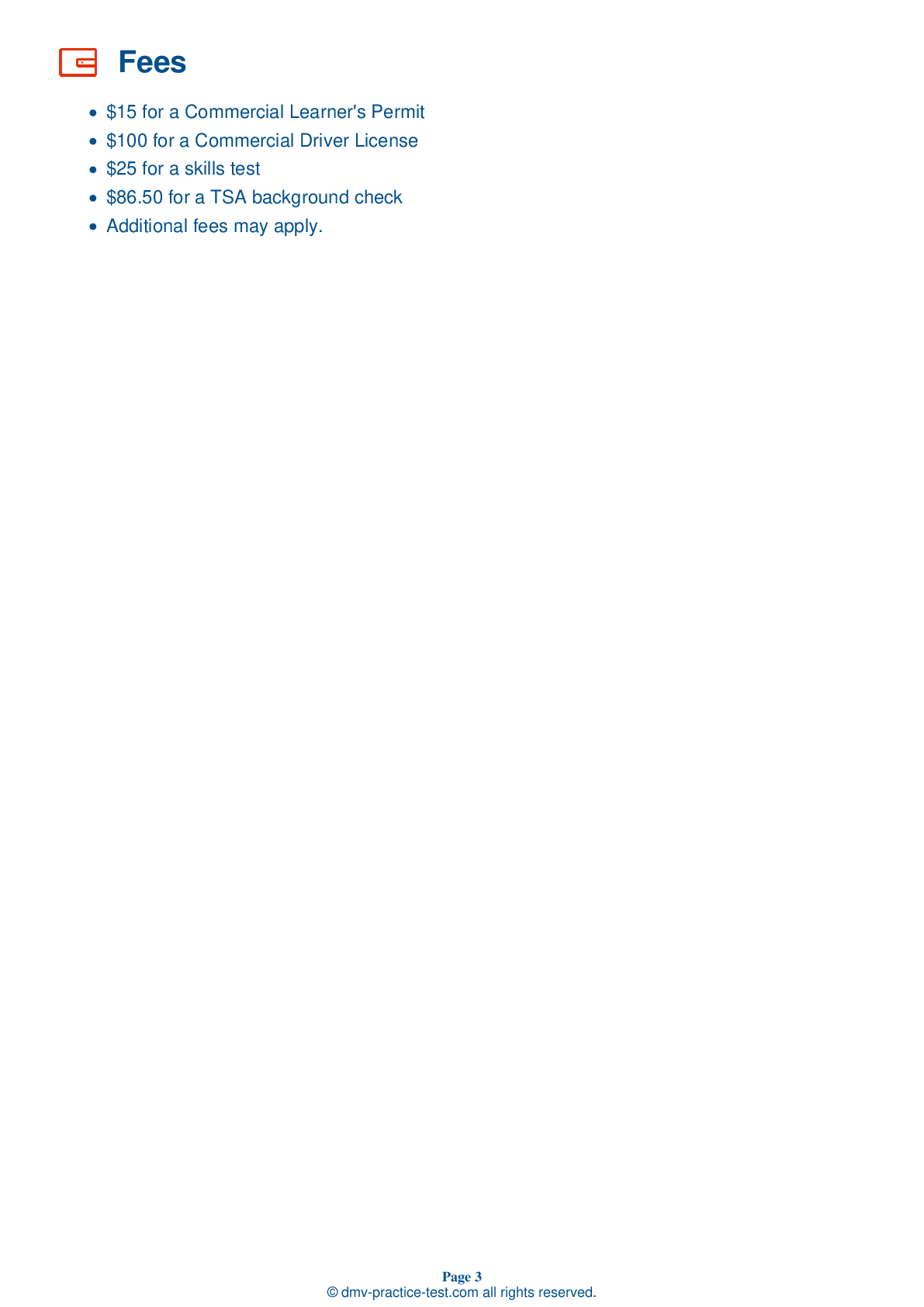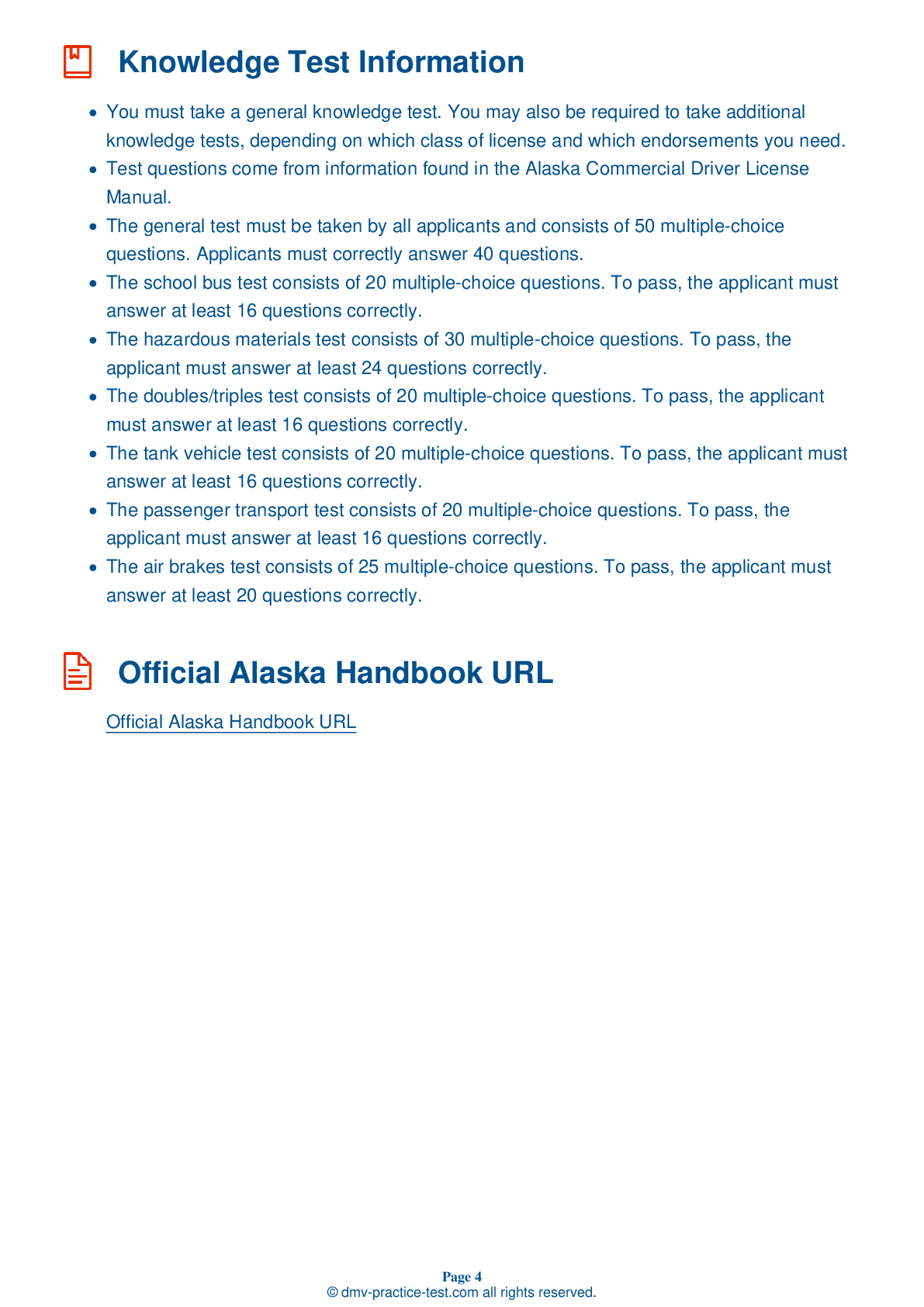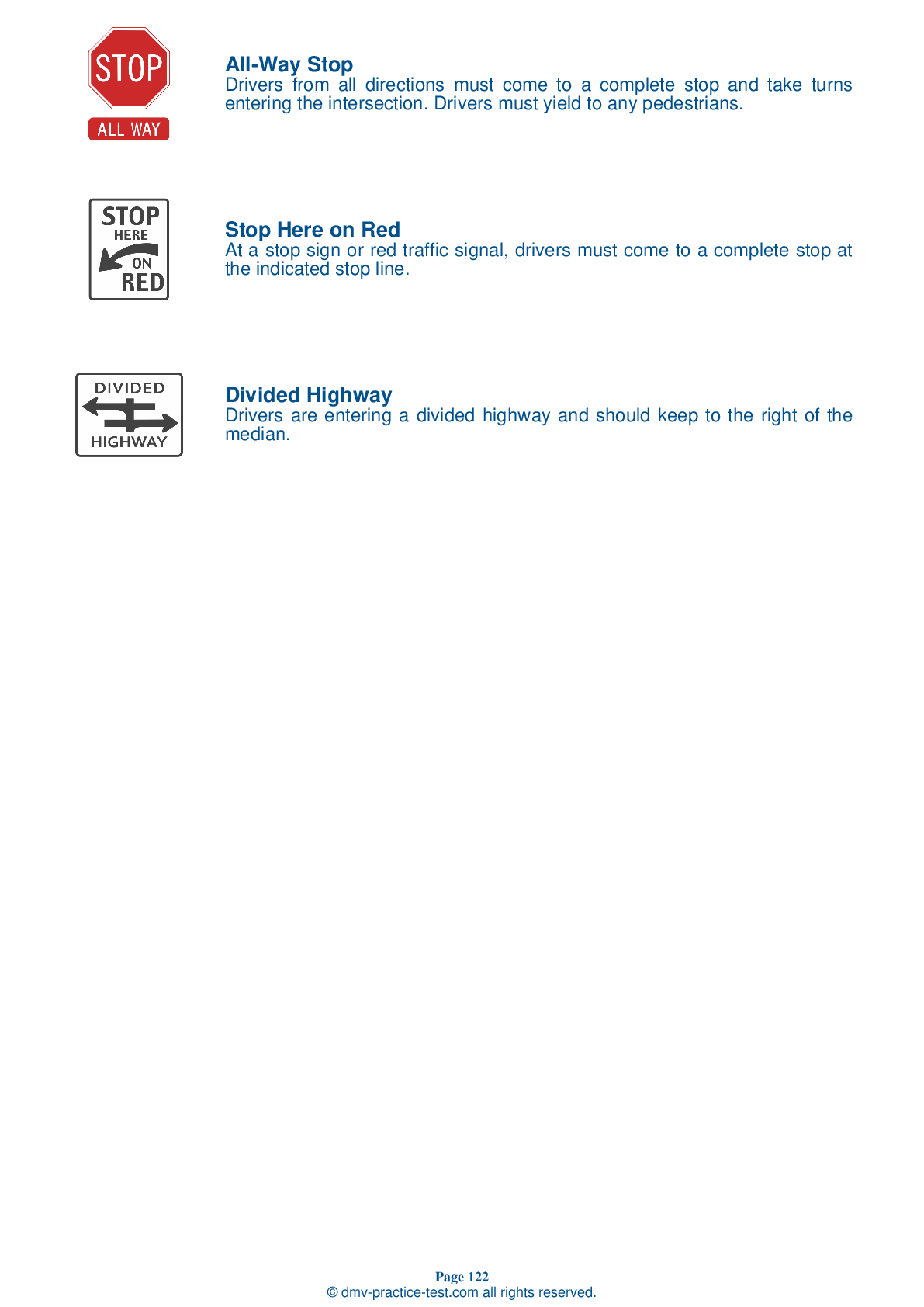Knowledge Test Class A #1
Class A Driving Test | Alaska 2025 #1 Page 2 of 7
Train for FREE online with our Alaska class A license test. The official exam test consists of several obligatory parts, with all of them checking your knowledge of different blocks of road rules. If you need to obtain a AK CDL class A permit in 2025, practice as much as possible. Free sample tests published on our website will help you check and improve your knowledge and boost your grades. Please bear in mind that CDL class A requirements may vary from state to state.
50
40
20
8 . The leakage rate for a triple combination vehicle with air brakes should be no more than ____ in one minute during a static leakage test.
When performing a static leakage test on a triple combination vehicle with air brakes, the leakage rate should be no more than 5 psi in one minute. If the air leaks from the air brake system at a quicker rate, the vehicle should not be driven because something likely needs to be repaired.
9 . When making a left turn where there are two available turn lanes, a driver should begin the turn in the rightmost lane because:
If making a left turn where there is more than one available turn lane, you should always choose to begin your turn in the rightmost lane. Large vehicles often have to swing right to make left turns. Because of this, it is safer for you to have other left-turning traffic to your left instead of to your right. This will allow you to have the best possible view of other turning vehicles and will lower the risk of your vehicle colliding with them.
10 . When starting an engine:
After a vehicle is started, the warning lights and buzzers should go out after a few seconds. If the warning signals do not turn off, there may be something wrong with the vehicle.
11 . The radiator cap:
Never remove the radiator cap or any part of the pressurized cooling system until it has cooled. Opening the cap while the system is too hot could release steam and boiling water that could severely burn you. If the radiator cap is cool to the touch, the system is likely cool enough for you to open the cap.
12 . Air tank drains:
Compressed air in an air brake system usually has a certain amount of water and oil in it. This can harm the system if allowed to accumulate. Air tanks have drain valves to aid in removing water and oil from the compressed air.
13 . Looking far ahead of your vehicle while driving is:
Good drivers look down the road at least 12 to 15 seconds ahead of their vehicles. This makes it possible to identify hazards early, when drivers are more likely to have time to respond appropriately.
14 . What should you do if your vehicle gets stuck on railroad tracks?
If your CMV gets stuck on railroad tracks, you should immediately leave the vehicle and get away from the tracks. Check the signposts or signal housing at the crossing for emergency contact information and call 911, or another appropriate emergency number.
2025 Alaska | Frequently Asked Questions
A CDL Class B license in Alaska allows the holder to operate any single vehicle with a Gross Vehicle Weight Rating (GVWR) of 26,001 pounds or more, or any such vehicle towing a vehicle not exceeding 10,000 pounds GVWR. This typically includes commercial buses, dump trucks, delivery trucks, and garbage trucks.
A Class B CDL license in Alaska allows the holder to operate vehicles such as city buses, tour buses, segmented buses, delivery trucks, dump trucks with small trailers, and garbage trucks. It's valid for any single vehicle with a Gross Vehicle Weight Rating (GVWR) of 26,001 pounds or more, or such vehicle towing a vehicle not exceeding 10,000 pounds GVWR.
To acquire a Class B CDL license in Alaska, you must be at least 18 years old (21 for interstate driving), possess a valid Alaska driver's license, pass a vision test, and successfully complete a general knowledge test. You must also pass a skills test in the type of vehicle you plan to drive, which includes a pre-trip vehicle inspection, a basic vehicle control test, and an on-road driving exam.
In Alaska, you must be at least 18 years old to qualify for a Class B CDL license for intrastate driving (within state borders). However, you must be at least 21 years old to engage in interstate driving (across state lines) or to transport hazardous materials.
While not always necessary, specific endorsements may be required for a Class B CDL license depending on the type of vehicle you plan to drive or the cargo you plan to transport. These could include endorsements for passenger vehicles, school buses, tank vehicles, or hazardous materials. Each endorsement requires passing a separate knowledge test and sometimes a skills test.
The Class B CDL skills test in Alaska encompasses three main areas: pre-trip vehicle inspection, basic vehicle control, and on-road driving. The pre-trip inspection examines your ability to assess your vehicle's safety. Basic vehicle control tests your ability to handle, turn, and stop the vehicle. On-road driving assesses your ability to drive safely in traffic.
Yes, Class B CDL license holders in Alaska are limited to operating vehicles weighing more than 26,001 pounds or towing vehicles weighing less than 10,000 pounds. They can also operate buses with a seating capacity of 24 passengers or more. However, they cannot drive Class A vehicles unless they have the appropriate endorsements and additional training.
In Alaska, the written Class B CDL test is primarily administered in English, in accordance with federal regulations. This is to ensure that all commercial drivers can read and understand traffic signs, signals, and other driving materials in English. Therefore, it's not typically offered in other languages.
Yes, you can request accommodations for the Class B CDL written exam if you have a disability. The Alaska DMV is committed to providing reasonable accommodations under the Americans with Disabilities Act. You'll need to provide documentation of your disability and specify your needed accommodations. It's recommended to make this request well in advance of your test date.
If you don't pass the Class B CDL written test in Alaska, you can retake it. However, you must wait at least one day before retesting. Keep in mind, there may be additional fees for each retest. It’s also recommended to study thoroughly and possibly seek additional training before attempting the test again.



